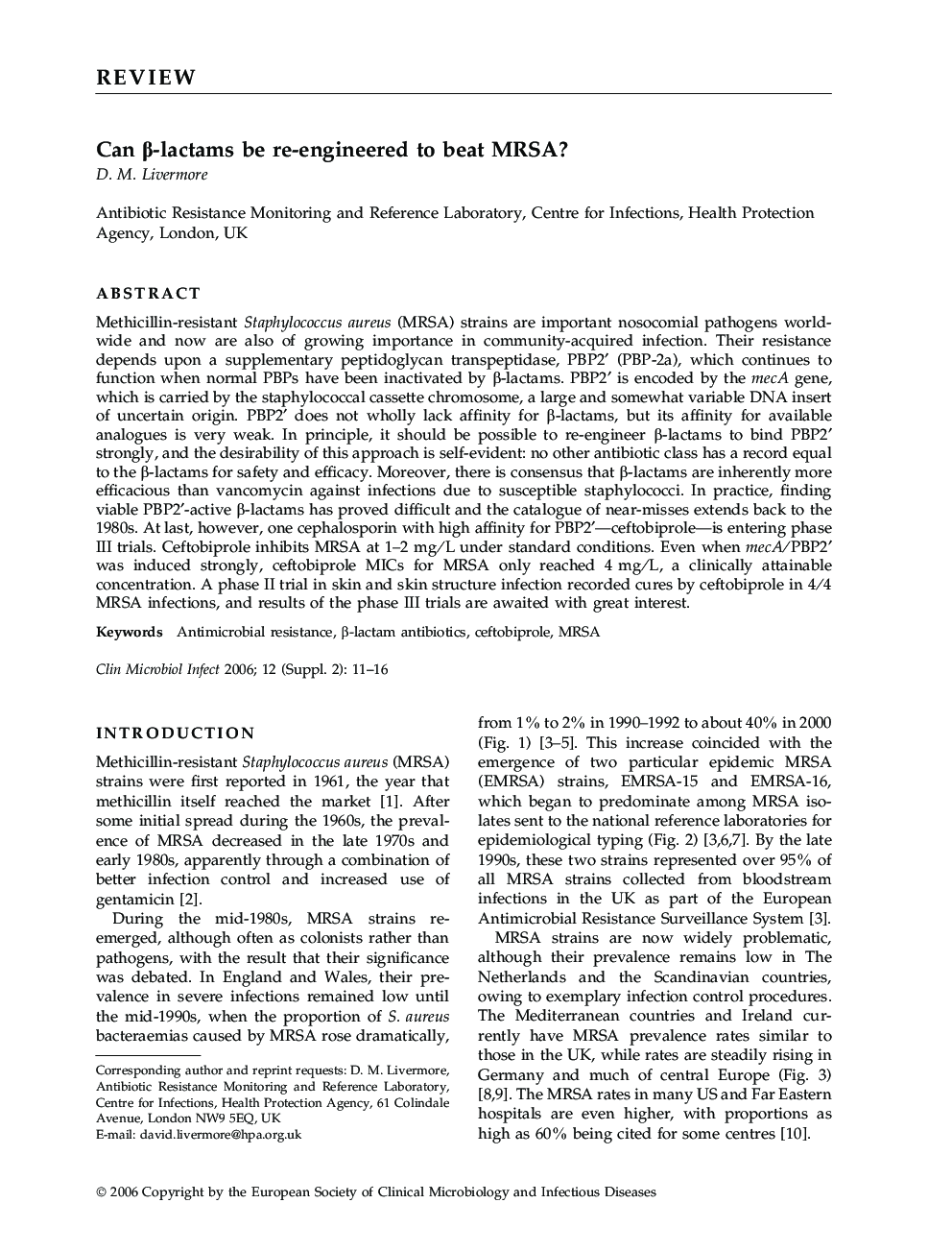| کد مقاله | کد نشریه | سال انتشار | مقاله انگلیسی | نسخه تمام متن |
|---|---|---|---|---|
| 3398970 | 1222356 | 2006 | 6 صفحه PDF | دانلود رایگان |

ABSTRACTMethicillin-resistant Staphylococcus aureus (MRSA) strains are important nosocomial pathogens worldwide and now are also of growing importance in community-acquired infection. Their resistance depends upon a supplementary peptidoglycan transpeptidase, PBP2′ (PBP-2a), which continues to function when normal PBPs have been inactivated by β-lactams. PBP2′ is encoded by the mecA gene, which is carried by the staphylococcal cassette chromosome, a large and somewhat variable DNA insert of uncertain origin. PBP2′ does not wholly lack affinity for β-lactams, but its affinity for available analogues is very weak. In principle, it should be possible to re-engineer β-lactams to bind PBP2′ strongly, and the desirability of this approach is self-evident: no other antibiotic class has a record equal to the β-lactams for safety and efficacy. Moreover, there is consensus that β-lactams are inherently more efficacious than vancomycin against infections due to susceptible staphylococci. In practice, finding viable PBP2′-active β-lactams has proved difficult and the catalogue of near-misses extends back to the 1980s. At last, however, one cephalosporin with high affinity for PBP2′—ceftobiprole—is entering phase III trials. Ceftobiprole inhibits MRSA at 1–2 mg/L under standard conditions. Even when mecA/PBP2′ was induced strongly, ceftobiprole MICs for MRSA only reached 4 mg/L, a clinically attainable concentration. A phase II trial in skin and skin structure infection recorded cures by ceftobiprole in 4/4 MRSA infections, and results of the phase III trials are awaited with great interest.
Journal: Clinical Microbiology and Infection - Volume 12, Supplement 2, 2006, Pages 11–16